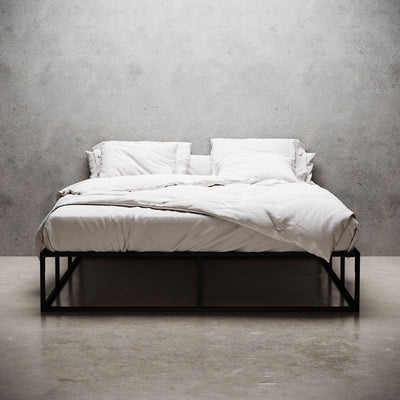alessi | roost double egg cup set
alessi | roost double egg cup set
Dimensions: 5 x 5 x 5cm
Material: Aluminium
- more stock due early September
The Roost egg cup by Australian designer Adam Goodrum was born from a memory of his childhood: the morning collecting of eggs. The geometric and proportionate shape of the egg, the sense of surprise and unexpectedness that is felt in opening it, have inspired the design of this egg cup. An object with fascinating geometry, like the perfect egg structure from which the author has drawn inspiration.
Composed of two symmetrical parts that fit one into the other. Once separated, the two parts that make up 'Roost' may contain two eggs or one egg.
Not dishwasher safe. Set includes 2 egg cups.

Click for more ideas from BRAND | Alessi
Founded in 1921 as a “Workshop for the processing of brass and nickel silver sheet metal, with foundry”, Alessi has always stood out for the high quality of its products. In almost a century of history, the company has gradually evolved to become one of the leading “Factories of Italian design”, capable of applying its expertise and excellence in design management to many different product types.
Open to change and international development, Alessi at the same time has a strong bond with the traditions and cultural background of its area and continues to be synonymous with handcrafted objects produced with the help of machines.
Incredibly - second only to the number of Italian designers represented in the Alessi stable are Australian designers, with 14 having been represented within the collection over the life of the company.

Click for more ideas from DESIGNER | Adam Goodrum
After completing a degree in Industrial Design at UTS, Sydney based Goodrum went on to receive a Bombay Sapphire Design Discovery Award in 2005 for his Eve chair, and continues to create practical, well resolved and humorous products. Adam Goodrum shot to fame after years of work on the now iconic "stitch chair" for Cappelini which went into production in 2008. Goodrum has recently been invited to judge a student competition at the Kortrijk XPO, an annual furniture exhibition in Belgium.
We asked Adam 3 Questions we were keen to hear his thoughts on:
1. Tell us about your designs and the process involved? How do your designs usually come about?
I find it difficult to describe my own work, but with any project I endeavour to add a personality or an added function to any object I’m designing. Throughout my work, a product has to justify its existence. With some of my more artistic projects I love to include an element of surprise and have always had a fascination with bold colour.
I’m fortunate enough to work with companies who share a common philosophy and methodology. They execute at a high level, using good materials and considered craftsmanship to create products that will last a lifetime. This kind of thinking is involved in my designs from conception to production.
In regards to my creative process I’m always working on a number of different projects so find myself thinking about them 24/7. I’m constantly looking for little details that could inspire or develop an idea - exploring making processes, noting clever detail in existing objects, and observing people and how they interact with they surroundings. Some of my works take a long time to develop, continually returning to them to adjust proportions or refine a certain aspect.
2. How do you feel about the replica industry (in Australia) and how has it affected your designs?
The replica industry is having detrimental effects on design in Australia and many designers, myself included, have been working to push for a legislative change to put a stop to it. Here replicas are not understood for what they are - fakes, and in turn, they are being perceived as merely cheaper versions of well known designs. Ultimately this is devaluing design in Australia, pushing out locally designed and made products and have had countless hours dedicated to their conception and development, replacing them with poorly made rip offs. I first hand have had my pieces copied and it is nothing but a theft of someone else’s work
Because of this lack of protection our designs, other measures have to be taken to protect our IP. With my Molloy chair, it has been designed so that it is very complex to CNC - therefore making the components hard to replicate. This means however, that the end product is an expensive chair, having to factor in the extensive development and production time. Secondly, whilst we could invest in larger scale production to bring the cost down, making Australian design accessible as it should be, registered designs are only ‘protected’ for 10 years, giving no incentive for long term investment.
3. What are your hopes for the future of design in Australia?
Over the past few years I have noticed that Australia’s design scene has been maturing; a multitude of small design practices emerging, born out of a new appreciation of design. This appreciation has permeated communities on both a private and commercial level, encouraging exploration of what design means to us and our culture. Coming from a previous period where Australian design was somewhat devalued and European held superior, I am excited to see a renewed proudness in our furniture and products.
While it is early days, I hope to see these changes inspire resourceful young designers to develop a culturally unique aesthetic, engage with communities and push our perceived limitations of design.
- Free delivery australia-wide (does not apply to bulky products) Top3 members receive free standard delivery Australia-wide for orders over $100
- more stock due early September
- more stock due early September









